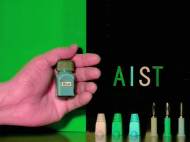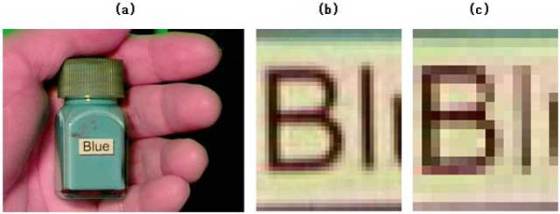Night-vision imaging in HD, color and with higher frame rate
 Researchers at the Japanese National Institute of Advanced Industrial Science and Technology (AIST) have collaborated with other research groups to develop an infrared color night-vision imaging technology able to record high-definition (HD) color videos even in darkness. The technology could be used in broadcast cameras used for nighttime recording, as well as to on-board vehicle cameras and security and surveillance cameras.
Researchers at the Japanese National Institute of Advanced Industrial Science and Technology (AIST) have collaborated with other research groups to develop an infrared color night-vision imaging technology able to record high-definition (HD) color videos even in darkness. The technology could be used in broadcast cameras used for nighttime recording, as well as to on-board vehicle cameras and security and surveillance cameras.
Although modern night-vision recording is available in HD, these cameras were able to record only monochromatic images you’ve seen on security, on-board vehicle cameras, and nocturnal wildlife observations. In darkness, infrared light is projected from an infrared projector fixed to the top of the camera to record infrared images and the camera’s internal image-processing system converts them into color images.
AIST researchers and their associates managed to improve this technology by introducing color and higher recording frame rate. The technology uses an infrared imaging technique which relies on three charge-coupled-device (3CCD) image sensors and an image-processing technique. The system can be fitted inside a conventional HD color broadcast camera without a significant change of its overall size and weight.
Objects in darkness are illuminated with infrared light, and the infrared light reflected from the objects is detected with a unique, highly sensitive infrared imaging technology. By coloring the detected infrared image based on the correlations between reflective properties of objects under visible light and those under infrared light, color video recording of the objects can be obtained with colors which are equivalent or similar to the colors of the objects under visible light.
3CCD recording method has been developed to enable much finer and faster image processing, as well as the frame rate of previous infrared color night-vision image-recording. Previously available 10 frames per second in night-vision imaging has been improved to 30 frames per second – a typical frame rate for current television cameras. In addition, the image sensors have been upgraded from VGA resolution (640×480 pixels) to full HD resolution (1920×1080 pixels).
Because the images recorded by using the new full HD infrared color night-vision imaging technology are in color, they contain much more information than monochromatic images recorded by conventional night-vision cameras. Moreover, because the frame rate is improved to 30 frames per second, it can record fast-moving objects well. For example, animal behavior can be recorded as HD color videos throughout day and night.
The technology could be used in a wide range of applications, including HD security cameras that can distinguish colors, on-board vehicle cameras that give enhanced visibility, and safety cameras in med-care fields.
AIST plans to shift the technology development onto private companies who could commercialize it and improve the performance and durability of the recording equipment. They also plan to make it much smaller, thus expanding its scope of application to devices other than broadcast cameras.










To be short this technology expands the capabilities of a regular camera with a infrared projector, algorithm equipment etc… to image fuse identical images from different sources together and bam, there you have it – color night vision, nothing new, nothing special.
Their early technology creates color nightvision images by analyzing reflected wave lengths from objects which are illuminated with IR light,but the system also identifies the characteristics of objects to determine which colors to apply to objects, the benefit of that technology is that it is not depended on images recorded at visible light, unlike the technology described here!!!